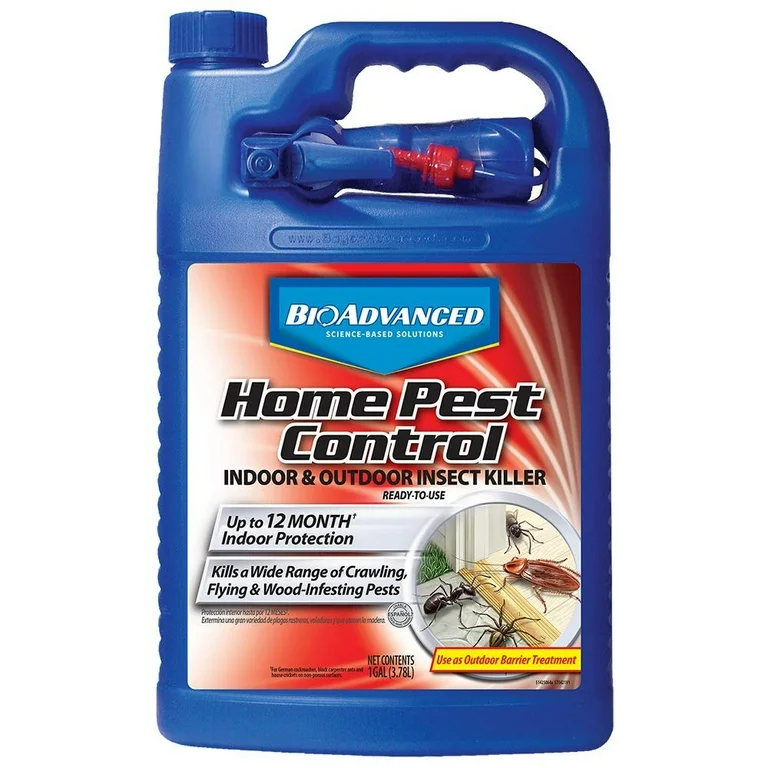A1 Bed Bug Exterminator Charlotte - Reliable and Economical Services
Wiki Article
Bed Insect Therapy Malfunction: Comparing Chemical Vs. Non-Chemical Solutions
In the realm of bug control, specifically when handling the consistent issue of bed insects, the option in between chemical and non-chemical treatment options can be a critical one. Both techniques use unique advantages and downsides, influencing variables such as efficiency, security factors to consider, and overall expense. By taking a look at the nuanced details of each approach, a clearer understanding of which course to go after in resolving a bed pest invasion can be attained.Effectiveness of Chemical Therapies
Chemical therapies for bed bug problems have actually been commonly identified for their quick and potent efficacy in eradicating these insects. When considering the efficiency of chemical therapies, it is vital to comprehend that they can provide a quick and detailed option to a bed bug problem.In addition, chemical treatments have the benefit of offering residual impacts, implying that they can remain to get rid of bed insects even after the first application. This residual action is especially valuable in combating any prospective re-infestations. Furthermore, the quick action of chemical therapies can bring relief to individuals encountering serious bed bug infestations, permitting them to regain control of their home promptly.
Security Worry About Chemical Solutions
One important facet that requires cautious factor to consider when using chemical remedies for bed bug therapy is ensuring the safety and security of owners and the atmosphere. While chemical treatments can be reliable in eliminating bed insects, they may pose threats otherwise handled appropriately. Among the primary security worry about chemical options is the possible injury they can trigger to human health and wellness. Exposure to particular chemicals made use of in bed pest treatments can bring about breathing concerns, skin irritability, or various other negative responses, particularly in individuals with pre-existing conditions or sensitivities. Furthermore, improper application or dosage of chemical pesticides can lead to poisonous deposits lingering in the cured location, posturing long-lasting health and wellness dangers to residents.Additionally, the environmental influence of chemical solutions is one more substantial consideration. Some chemicals used in bed bug treatments may be harmful to valuable bugs, wildlife, and ecological communities if they leach right into the soil or water systems. It is important to use chemical treatments deliberately, following security standards, and considering much less harmful choices to minimize these dangers and guarantee the safe and reliable administration of bed insect problems.
Advantages of Non-Chemical Techniques
Taking into consideration the prospective security problems and ecological effect connected with chemical remedies for bed insect therapy, discovering non-chemical approaches provides a promising choice with several distinct benefits. Non-chemical treatments are eco friendly, as they do not add to air or water air pollution, making them a sustainable option for bug control.Additionally, non-chemical options can be reliable in targeting bed pests, consisting of hard-to-reach locations where chemical treatments might not penetrate - A1 charlotte hop over to here bed bug exterminator. Methods such as warm therapy, vacuuming, vapor cleansing, and bed mattress coverings give thorough eradication without the usage of hazardous chemicals.
Limitations of Non-Chemical Treatments

In addition, non-chemical therapies typically call for several applications to achieve successful removal. This can be time-consuming and might not always guarantee complete elimination of all bed bugs and their eggs, particularly in hidden or hard-to-reach areas.
Additionally, the success of non-chemical treatments heavily relies on appropriate application and thoroughness, which can be testing for individuals without expert know-how. Poor application of non-chemical techniques might result in insufficient eradication, leading to relentless problems and the requirement for extra therapies.
Consequently, while non-chemical therapies have their benefits, it is important to recognize these restrictions and consider them when establishing the most reliable technique for handling bed bug invasions.
Expense Contrast: Chemical Vs. Non-Chemical Options
Provided the restrictions connected with non-chemical therapies, a crucial aspect to evaluate in the context of bed bug management is the cost comparison between chemical and non-chemical alternatives. Chemical therapies generally include the application of insecticides by professionals, which can vary from $250 to $900 per space, depending on the seriousness of the invasion and the size of the area to be dealt with. In helpful hints comparison, non-chemical therapies like heat treatment or vapor can be extra costly, with costs varying from $1,000 to $6,000 for an entire home. While the initial price of chemical therapies may appear reduced, numerous therapies may be called for to completely get rid of the invasion, potentially boosting the overall price. On the other hand, non-chemical alternatives may supply a more environment-friendly and sustainable solution, although they can be cost-prohibitive for some people. Ultimately, when considering the expense of bed bug therapy choices, it is necessary to consider the in advance expenditures against the effectiveness and long-lasting sustainability of the picked approach.Conclusion
click reference
Considering the possible safety and security issues and ecological influence connected with chemical solutions for bed insect treatment, checking out non-chemical strategies provides an encouraging option with numerous unique benefits.Given the restrictions associated with non-chemical treatments, an essential element to assess in the context of bed bug monitoring is the cost contrast between chemical and non-chemical choices. In contrast, non-chemical therapies like warmth treatment or heavy steam can be much more expensive, with prices ranging from $1,000 to $6,000 for a whole home. While the preliminary price of chemical therapies may appear reduced, several treatments may be called for to completely eradicate the infestation, potentially boosting the overall cost.In final thought, when comparing chemical and non-chemical bed bug treatment options, it is necessary to consider efficiency, safety, benefits, restrictions, and price.
Report this wiki page